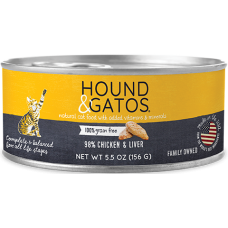How To Choose a Cat Food
Cats are obligate carnivores, meaning they need a diet of meat for their survival. Dogs on the other hand can do well on diets that include good sources of carbohydrates as well as meats and fats. Commercial dog foods, made in a biscuit style, started in the late 1800's. Cat food followed in the 1930's with a canned product by Gaines. Canned food continued until World War II when tin for the cans was rationed and processed pet food was not considered a necessity. By 1946 "dry" formulas of food represented 85% of the market.
Corn, wheat and soy, relatively inexpensive grains, were then used in foods for years to make the kibble shelf stable and consistent. These ingredients allowed a dry food possible for domestic animals that could sit on the grocer's shelf for a few years. In recent years they have also become the cheap filler ingredients that have taken over the recipe panel. The rise in grain free cat foods using novel starches like potato or tapioca has taken place in the last twenty years and canned food is again gaining popularity. The advantages of canned food many believe are better moisture for the cat, a purer source of protein (animal, not plant based) and lower levels of carbohydrates.
When choosing any food look at three things. The quality of the ingredients, the recipe, and the manufacturer. Quality of ingredients means no by-products or unspecified proteins or fats. The words "animal protein" in an ingredient panel could mean any kind of meat they don't want to list specifically, from a mouse to an elephant and any part thereof. There should be no added dyes or colorants, these are unnecessary and they are largely found in cheaper foods to make us think of fresh greens or "real meat".
In cat food you should see meats (quality, no by-products) as the first ingredient, remember they are true carnivores, and a fat in the first five ingredients. The saying goes that if it isn't in the first five ingredients, there's not that much in there. If you choose a cat food that has grains look for something other than corn, wheat or soy. It's good to know that the company selling the food also purchased their ingredients and manufactured it themselves. If their name is on the product, from purchasing the raw material to putting it on our shelves, they take more pride in its results.
We can help you choose any number of good diets for your cat; kibble, canned or raw. There are as many options out there as there are cats and we would be happy to help.
Share this on Twitter | Share this on Facebook | Email to a friend.



